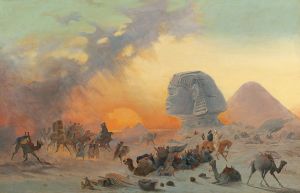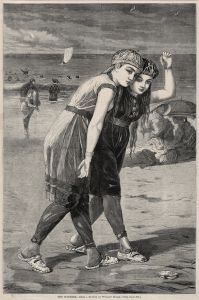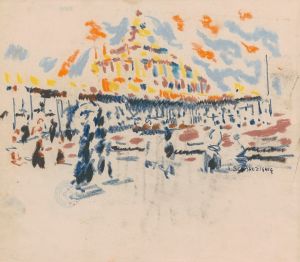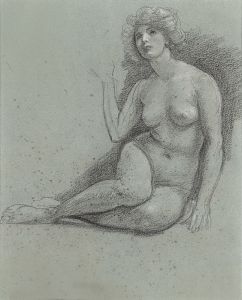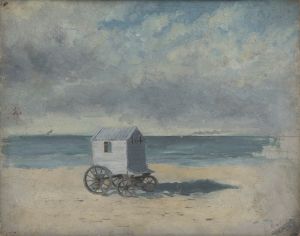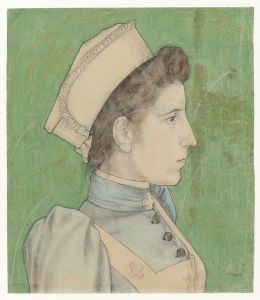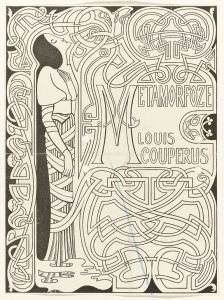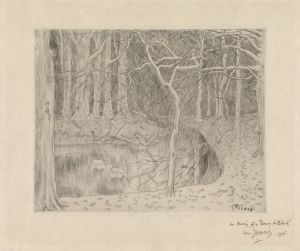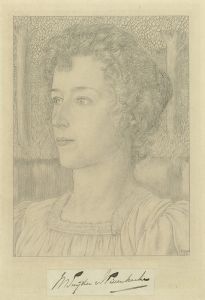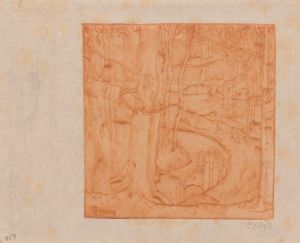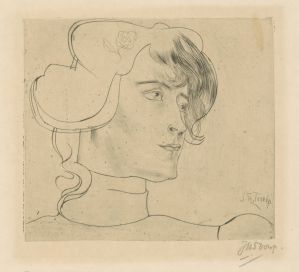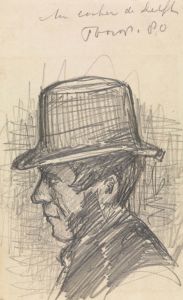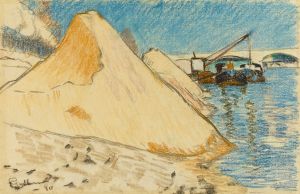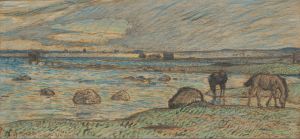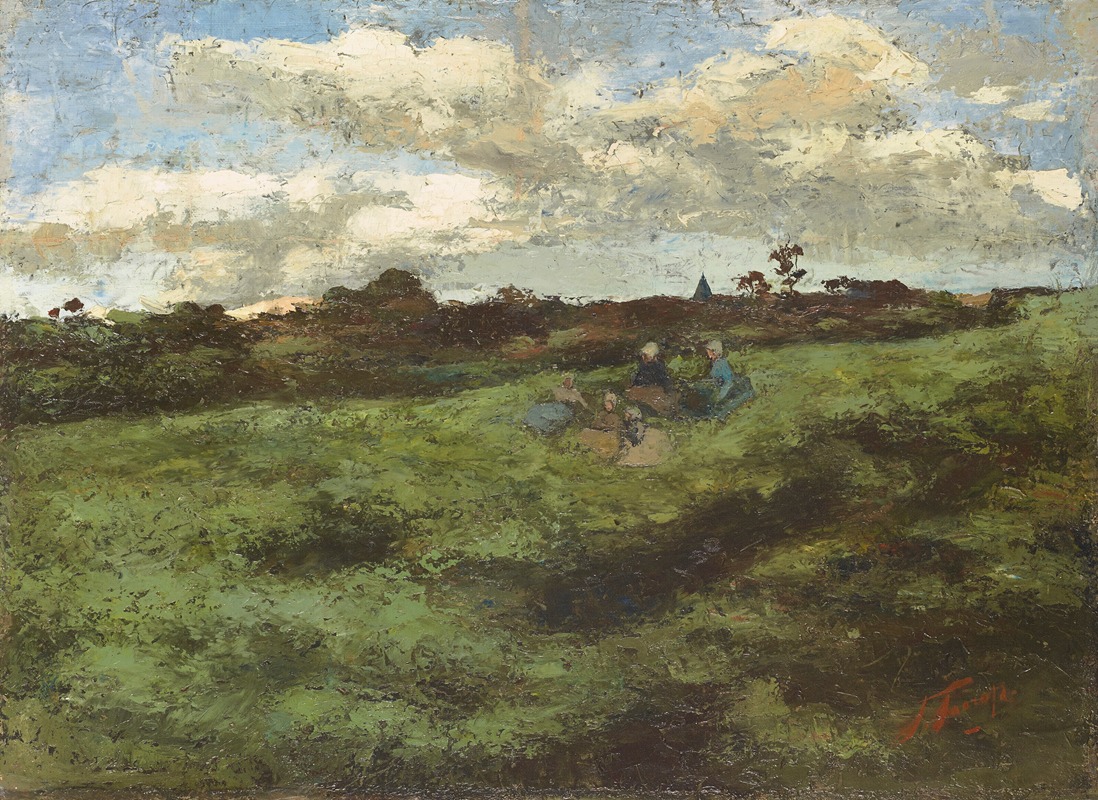
Kinderen op het duin – Landschap bij Brussel
A hand-painted replica of Jan Toorop’s masterpiece Kinderen op het duin – Landschap bij Brussel, meticulously crafted by professional artists to capture the true essence of the original. Each piece is created with museum-quality canvas and rare mineral pigments, carefully painted by experienced artists with delicate brushstrokes and rich, layered colors to perfectly recreate the texture of the original artwork. Unlike machine-printed reproductions, this hand-painted version brings the painting to life, infused with the artist’s emotions and skill in every stroke. Whether for personal collection or home decoration, it instantly elevates the artistic atmosphere of any space.
"Kinderen op het duin – Landschap bij Brussel" (Children on the Dune – Landscape near Brussels) is a painting by the Dutch-Indonesian artist Jan Toorop, created in 1893. Jan Toorop, born Johannes Theodorus Toorop on December 20, 1858, in Purworejo, Java, was a prominent figure in the Symbolist movement and is known for his diverse style that evolved throughout his career.
The painting "Kinderen op het duin – Landschap bij Brussel" is an excellent example of Toorop's work during the period when he was influenced by Symbolism and Art Nouveau. This period marked a significant shift in his artistic approach, characterized by intricate lines, decorative elements, and a focus on the mystical and the spiritual.
In this particular painting, Toorop depicts a serene landscape near Brussels, featuring children playing on the dunes. The composition is notable for its use of flowing lines and harmonious colors, which create a sense of tranquility and nostalgia. The children are portrayed in a stylized manner, typical of Toorop's Symbolist phase, where the emphasis is on conveying an emotional and spiritual experience rather than a realistic depiction.
Toorop's use of color in "Kinderen op het duin – Landschap bij Brussel" is subtle yet effective, with earthy tones dominating the landscape and softer hues used for the children's clothing. This color palette enhances the overall mood of the painting, evoking a sense of calm and simplicity. The landscape itself is rendered with a delicate touch, showcasing Toorop's skill in capturing the natural beauty of the surroundings.
Jan Toorop's work during this time was heavily influenced by his interactions with other Symbolist artists and his exposure to various artistic movements in Europe. His unique style, combining elements of Symbolism and Art Nouveau, set him apart from his contemporaries and established him as a significant figure in the art world.
"Kinderen op het duin – Landschap bij Brussel" reflects Toorop's interest in themes of innocence and the natural world, which were common in his work. The painting also demonstrates his ability to blend different artistic influences into a cohesive and distinctive style. Toorop's attention to detail and his use of line and color make this painting a notable example of his artistic achievements during the late 19th century.
Throughout his career, Jan Toorop continued to experiment with different styles and techniques, leaving a lasting impact on the art world. His work remains highly regarded for its originality and emotional depth. "Kinderen op het duin – Landschap bij Brussel" is a testament to Toorop's talent and his contribution to the Symbolist movement.
Jan Toorop passed away on March 3, 1928, in The Hague, Netherlands. His legacy continues to be celebrated, and his works are held in high esteem by art historians and enthusiasts alike. "Kinderen op het duin – Landschap bij Brussel" remains an important piece in understanding the evolution of Toorop's artistic journey and his influence on modern art.





